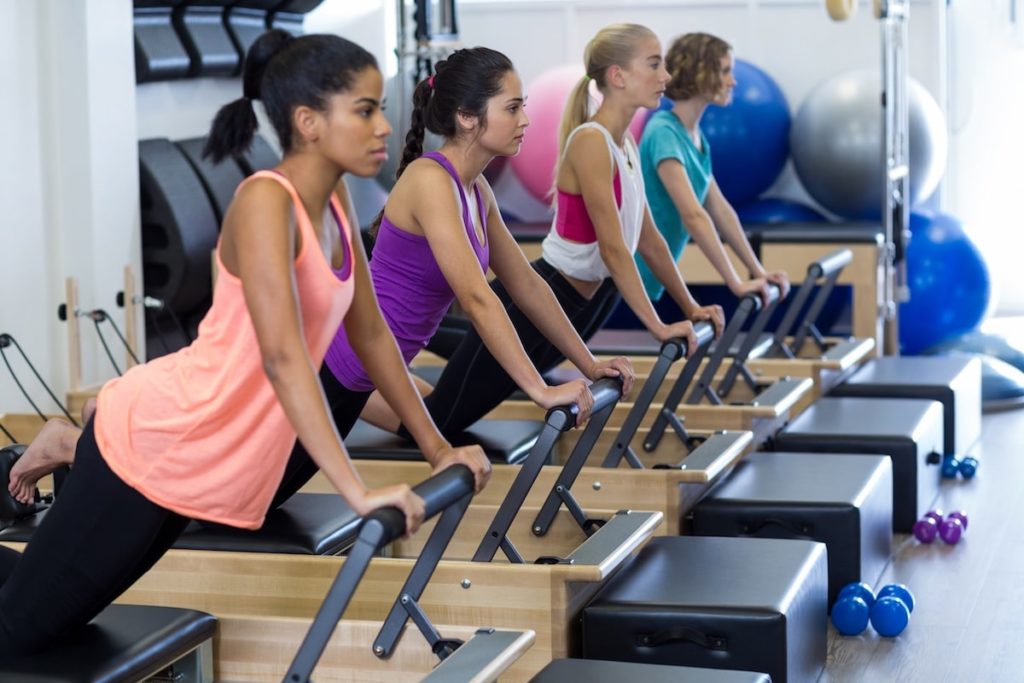Pilates for Recreational Athletes

Professional athletes of all kinds have discovered that adding Pilates to their training can improve performance, reduce injury, speed recovery, and help their hardworking bodies stay balanced and healthy (Caple 2016; Knowlton 2016; Saxon 2016). Pilates—a whole-body exercise system that can help you develop strength, functional flexibility, coordination and balance—can offer those same benefits to recreational athletes. A well-rounded program, particularly one offered in a fully equipped Pilates studio, can do wonders for athletes of almost any age, ability or sport.
Nora St. John, MS, who has been teaching Pilates in rehabilitation and studio settings for 20 years and is the Balanced Body® education program director, explains the advantages.
Pilates Develops Sports Skills
A skilled Pilates teacher with experience in your activity of choice can act as a coach to help you develop particular skills and optimize movement patterns. For example, if you played baseball or softball in college and you join a recreational league in your late 30s, a Pilates teacher can help you work on leg alignment, strength and balance in running, core support, and balance in rotation for throwing. A good teacher will analyze the strength, range of motion, coordination and movement patterns necessary for success; use the flexibility of the Pilates environment to tailor exercises to your sport; and address physical limitations that may hamper your chances of success.
Pilates Balances the Body
Many recreational athletes develop muscle imbalances and poor posture from combining a sedentary occupation with their sport. For example, bicycling has obvious cardiorespiratory, strength and endurance benefits, but as a repetitive activity it puts strain on the lumbar spine, neck, shoulders, arms and legs. Combining daily work sitting at a desk with hours on a bicycle in deep hip flexion can decrease flexibility in the hip flexors and lower back, leading to stress in these areas. An appropriate Pilates program would emphasize hip, lumbar and thoracic extension to counteract the effects of repetitive stress in a seated position.
Pilates Helps With Recovery
The relatively slow pace, full range of motion, light stimulation of the myofascial system and symmetrical movement patterns of Pilates help the body to recalibrate after the speed, stress and sudden forces of a game day. You may find that a Pilates class after a big race or competition helps to improve circulation without increasing stress on the joints, muscles and other tissues of the body. Working a balanced program can reset the body’s natural movement patterns and ease the aches and pains of a hard workout.
As a recreational athlete, you can benefit from practicing Pilates, regardless of your preferred sport (Kloubek 2011). A skilled Pilates teacher can play a critical role in keeping you balanced, tuned up and ready for action.
Taking two to three sessions a week can yield significant improvements in as little as 4 weeks. Working with an instructor who understands the demands of your sport is especially beneficial but is not always necessary. With the help of a well-rounded Pilates routine, sport performance can improve even if the instructor is not familiar with your particular athletic activity.
References
Caple, J. 2016. Hunter Pence credits Pilates with helping him prepare for season. Accessed Feb. 7, 2016: espn.com/blog/sweetspot/post/_/id/69106/hunter-pence-credits-pilates-with-helping-him-prepare-for-season.
Kloubec, J. 2011. Pilates: How does it work and who needs it? Muscle, Ligaments and Tendons, 1 (2), 61–66.
Knowlton, E. 2016. Cubs ace Jake Arrieta explains how Pilates helped turn him into one of the best pitchers in baseball. Accessed Feb. 7, 2017: businessinsider.com/cubs-jake-arrieta-used-pilates-became-one-of-best-mlb-pitchers-2016-3.
Saxon, M. 2016. Cardinals’ latest training method: Pilates. Accessed Feb. 7, 2017: espn.com/blog/st-louis-cardinals/post/_/id/159/cardinals-latest-training-method-pilates.




